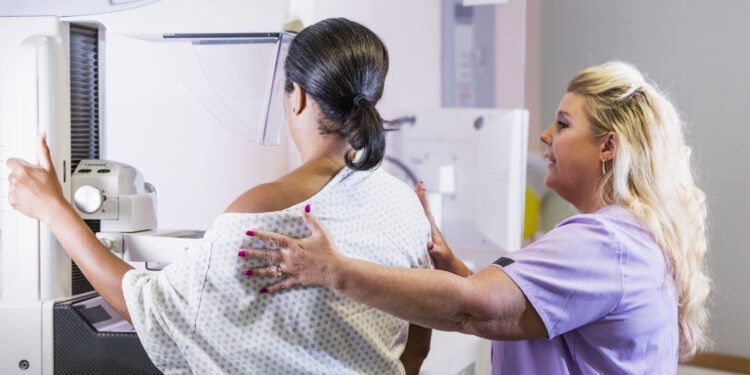The U.S. Preventive Services Task Force (USPSTF) has updated its breast cancer screening guidelines, recommending that women start getting regular mammograms at age 40. This change advances the recommended age by a decade from the previous guidance, aiming to enhance early detection and treatment of breast cancer.
According to the USPSTF, breast cancer is the second most common cancer and cause of cancer-related deaths among women in the U.S. In 2023 alone, approximately 43,170 women died of breast cancer. The incidence of breast cancer in women in their forties has been rising since 2000, with a noticeable increase of about 2% per year between 2015 and 2019.
Earlier guidelines from 2016 suggested that women in their forties should consider screening based on family history or specific risk factors, with routine screening starting at 50. However, the new recommendations highlight the importance of earlier detection. Black women face a heightened risk, with a 40% higher chance of dying from breast cancer compared to white women.
Dr. Carol Mangione, co-author of the new recommendation, emphasized the potential life-saving impact: “If all women followed our new recommendation, we could reduce mortality from breast cancer in the U.S. by about 20%.”
Early detection through mammograms is crucial. The Centers for Disease Control and Prevention (CDC) notes that mammograms can identify breast cancer up to three years before it can be felt through physical examination. According to the American Cancer Society, the five-year survival rate for breast cancer detected early, before spreading, is as high as 99%.
While most insurance plans cover routine mammograms, the CDC’s National Breast and Cervical Cancer Early Detection Program (NBCCEDP) offers free screenings and services for uninsured women and those with low income.


![Ne-Yo Says He Doesn’t Overexpose His Children to His Polyamorous Lifestyle [Video] - Baller Alert Ne-Yo Says He Doesn’t Overexpose His Children to His Polyamorous Lifestyle [Video]](https://balleralert.com/wp-content/uploads/2022/02/GettyImages-1075359642.jpg)
